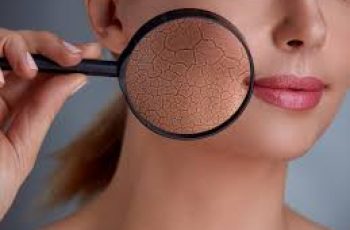
Can I Use Granactive Retinoid with Lactic Acid? A Detailed Guide
When it comes to skincare, two ingredients stand out as true game-changers: chemical exfoliants like lactic acid and retinoids such as granactive retinoid.
Both deliver noticeable results but understanding how to layer them safely can feel overwhelming.
Many skincare enthusiasts struggle to figure out which ingredients can be used together and which combinations should be avoided.
Layering actives incorrectly can lead to irritation, redness, or even worsen skin issues.
In today’s blog post, we’ll dive deep into granactive retinoid and lactic acid.
We’ll explain their individual benefits and reveal the best ways to use them together without compromising your skin’s health. Ready? Let’s get started.
What is Granactive Retinoid?
Granactive retinoid, also called hydroxypinacolone retinoate, is a next-generation derivative of vitamin A.
Unlike traditional retinol, it’s a highly researched ingredient known for powerful skin benefits with minimal side effects.
Retinoids, in general, are famous for improving skin texture, reducing signs of aging, and fighting acne.
However, many retinoids cause redness, peeling, and irritation, especially when first introduced. Granactive retinoid is unique because it offers many benefits but with far less irritation.
Skincare Benefits of Granactive Retinoid
Stimulates skin cell growth: Encourages renewal for a brighter, healthier complexion.
Thickens skin: Helps the skin build a stronger barrier against sun damage.
Speeds up cell turnover: Reduces fine lines and wrinkles and prevents new ones.
Clears clogged pores: Removes excess sebum, dirt, and bacteria that cause blackheads and breakouts.
Evens skin tone: Helps fade hyperpigmentation and brighten dull skin.
Boosts collagen and elastin: Firms and plumps the skin, improving elasticity and smoothness.
Granactive retinoid works deep inside the skin while being gentle enough for many skin types, even those prone to sensitivity.
If you want to explore other retinoids, check out our Skin School blog for more detailed information.
What is Lactic Acid?
Lactic acid is part of the alpha hydroxy acid (AHA) family. It’s known as one of the gentlest chemical exfoliants available.
Derived from fermented milk and dairy, lactic acid can provide similar benefits to stronger acids like glycolic acid without irritating the skin.
Skincare Benefits of Lactic Acid
Exfoliates dead skin: Removes surface buildup that causes dullness, breakouts, and clogged pores.
Firms and thickens skin: Supports skin elasticity and a youthful appearance.
Reduces fine lines: Smooths wrinkles for a softer, younger-looking complexion.
Humectant properties: Attracts and locks moisture into the skin, keeping it hydrated.
Variety of strengths: Available in concentrations from 5% to over 12%, letting you customize your routine.
Larger molecule size: Doesn’t penetrate deeply, reducing irritation risk.
Suitable for all skin types: Gentle enough even for sensitive or dry skin.
For a deeper dive into lactic acid, see our dedicated blog post.
Can I Use Granactive Retinoid and Lactic Acid Together?
Yes, you can use both, but timing and application matter. Using them improperly could cause irritation or reduce their effectiveness.
Key Tips for Using Them Together
Use at different times of the day: Apply lactic acid in the morning and granactive retinoid at night.
Morning benefits of lactic acid: Removes buildup, preps skin to absorb other products, and helps with hydration.
Evening benefits of granactive retinoid: Works overnight to repair skin and fight signs of aging without UV interference.
Always wear sunscreen: Retinoids increase sun sensitivity. Use SPF 30 or higher daily to protect your skin.
Build tolerance gradually: Introduce each ingredient slowly to reduce irritation risks.
If sensitivity occurs: Use the acids every other day or reduce application frequency.
Consult a dermatologist: Especially if you’re new to these ingredients or have sensitive skin.
Why Not Use Granactive Retinoid and Lactic Acid Together at the Same Time?
Both ingredients affect the skin’s pH and barrier. Layering them simultaneously can disrupt the skin’s natural acid mantle and cause:
Redness and irritation
Dryness and peeling
Increased sensitivity and discomfort
By separating their use, you allow your skin to benefit from each ingredient’s unique properties without overwhelming it.
Can You Use AHA (like Lactic Acid) with Granactive Retinoid?
Yes, combining AHAs and granactive retinoid is possible but should be done carefully.
Granactive retinoid is praised for being less irritating than other retinoids.
However, AHAs like lactic acid have acidic pH formulas.
Applying both at once may cause excessive acidity on the skin.
This can lead to irritation, redness, and dryness.
The best approach is to use them in separate routines — AHA in the morning, retinoid at night.
Alternatively, use them on alternate days or allow time between applications.
Let your skin’s pH rebalance before applying the next product.
Additional Tips for Combining Granactive Retinoid and Lactic Acid
Hydrate well: Use humectants like hyaluronic acid or soothing ingredients like niacinamide to support the skin barrier.
Avoid layering other strong actives: Such as vitamin C or benzoyl peroxide, alongside acids and retinoids initially.
Use gentle cleansers: To avoid stripping natural oils and disrupting your skin barrier.
Monitor skin’s response: If you notice irritation, redness, or peeling, reduce frequency or stop one product.
Patience is key: Visible improvements can take 4-6 weeks, so consistency matters.
Stay sun-safe: Both ingredients increase photosensitivity. Sunscreen is non-negotiable.
Common Questions About Granactive Retinoid and Lactic Acid
Q: Can I mix these in one product?
A: No, they typically come in separate formulas and mixing isn’t advised due to pH and irritation risks.
Q: How often should I use them?
A: Start with 2-3 times per week, then increase as tolerated.
Q: What if my skin feels irritated?
A: Pause use, moisturize, and consult a dermatologist if needed.
Q: Can I use other AHAs or retinoids with these?
A: Be cautious. Introducing multiple acids or retinoids may increase irritation.
Conclusion
Granactive retinoid and lactic acid are powerful, effective ingredients that can dramatically improve your skin when used correctly.
Their combined benefits include exfoliation, enhanced cell turnover, improved texture, reduced wrinkles, and a brighter, more even complexion.
To enjoy the best results, apply lactic acid in the morning and granactive retinoid in the evening, or alternate their use. This reduces irritation risk while letting each ingredient work optimally. Always protect your skin with broad-spectrum SPF daily and support it with hydrating ingredients.
Skincare is a journey that requires patience, consistency, and understanding your skin’s needs.
If you have questions or need personalized advice, consider consulting a skincare professional or dermatologist. And feel free to follow us on Instagram for more tips and expert guidance.


